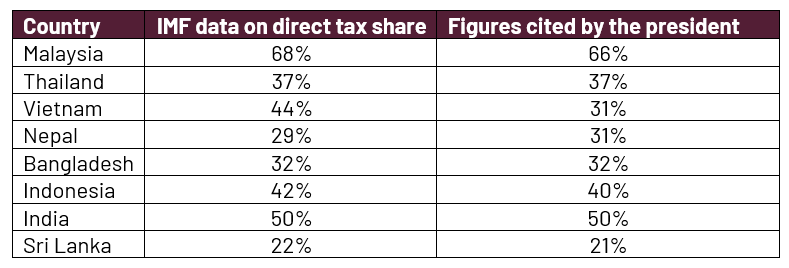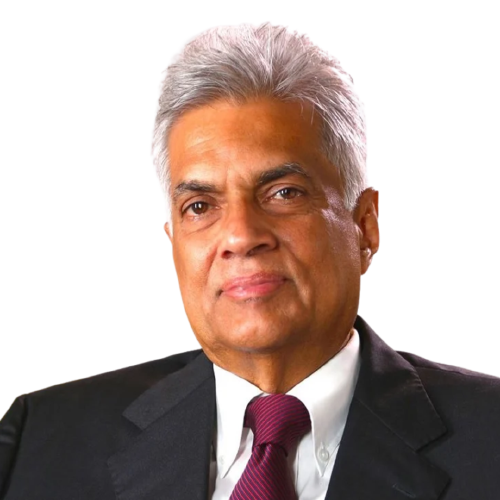Fact Check
The president while delivering the government’s policy statement, claims that the share of direct taxes collected in Sri Lanka is lower compared to many Asian countries and suggests that increasing the share of direct taxes would reduce the tax burden (indirect taxes) on the “general public” (interpreted here as “wider lower-income population”).
To check this claim, FactCheck.lk consulted the IMF data on revenue statistics.
Direct taxes refer to what is collected from income, profits or wealth accumulated. Indirect taxes refer to what is collected through the purchase of goods and services. All taxes can be classified as either direct or indirect.
Exhibit 1 shows that there are mostly only small deviations (under 10%) between the president’s numbers and what was reported in the IMF database. There is a large deviation in the case of Vietnam, where the direct taxes are higher after accounting for property taxes, which the president’s calculation has omitted. However, correcting for that error only strengthens the overall claim of the president: that other countries have a much larger share of direct taxes than Sri Lanka.
Subject to the additional note to this fact check, there is merit to the president’s suggestion that direct taxes can target the more affluent and thereby help to reduce indirect taxes that also affect wider lower-income groups. The data that he provides, and checked against IMF data, support his specific overall claim that Sri Lanka has an unusually low level of direct taxes even compared to many Asian countries.
Therefore, we classify the president’s statement as TRUE.
*FactCheck.lk’s verdict is based on the most recent information that is publicly accessible. As with every fact check, if new information becomes available, FactCheck.lk will revisit the assessment.
Exhibit 1: Direct tax share (latest year available*)

Source: IMF
*Latest data for Vietnam and India was only available for 2019 and 2018 respectively. Data for all other countries were available for 2021.
Note: Wherever the numbers are available the general government expenditure is considered. However, when general government expenditure is not available, the central government expenditure is considered.
Additional note: The reason that indirect taxes are seen as more burdensome on the wider low-income groups would be because it is thought to target consumption that is common to all rather than high income or wealth that is specific to the affluent. However, this can sometimes be remedied, as done in Sri Lanka, by the design of the indirect consumption tax. That is, by placing specific consumption taxes on high-value consumer goods that would generally be purchased only by the affluent – e.g., excise tax on luxury cars.
The following article explains why direct and indirect taxation in Sri Lanka should not be thought of being equivalent to progressive and regressive taxation https://www.themorning.lk/articles/224340.
Additional Note
Sources
Database of the International Monetary Fund (IMF) detailing revenue breakdown, available at https://data.imf.org/regular.aspx?key=60991467 [last accessed 15 February 2023].


